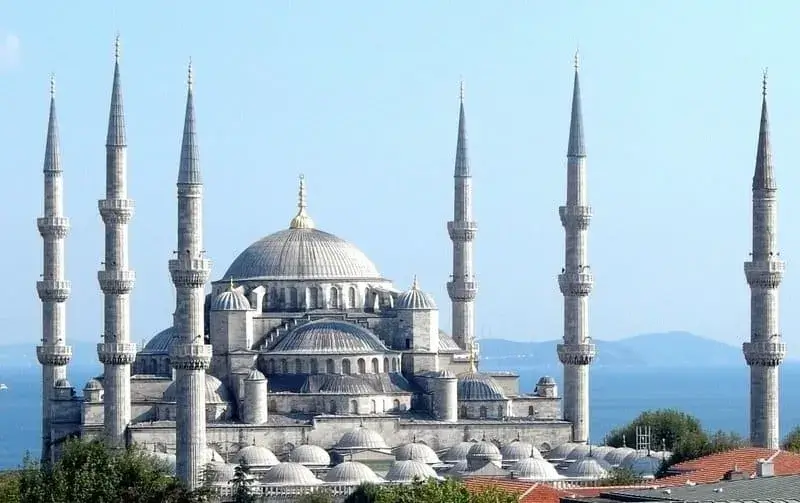The Blue Mosque (1616)

Title: The Blue Mosque (Sultan Ahmed Mosque)
Location: Istanbul, Turkey
Construction Started: 1609
Completion Year: 1616
Status: Active Mosque, Historic Landmark
Architectural Style: Ottoman architecture, Islamic
Historical Significance: Iconic mosque with stunning blue tiles
Description: The Blue Mosque, officially known as the Sultan Ahmed Mosque, is a magnificent mosque located in Istanbul, Turkey. It was commissioned by the Ottoman sultan Ahmed I and constructed between 1609 and 1616 during the height of the Ottoman Empire.
The mosque's nickname, "The Blue Mosque," comes from the more than 20,000 blue tiles that adorn its interior walls and domes, creating a mesmerizing and unique visual effect. The intricate tilework features floral motifs and geometric patterns, enhancing the serene ambiance of the prayer hall.
The Blue Mosque boasts an impressive architectural design, with a grand dome flanked by six soaring minarets, making it one of the most recognizable landmarks in Istanbul's skyline. The main prayer hall is spacious and can accommodate thousands of worshipers at once.
The exterior of the mosque is equally impressive, with cascading domes and semi-domes, intricate calligraphy, and ornate stone carvings.
As an active mosque, The Blue Mosque remains an important place of worship for Muslims. Visitors from around the world are welcome to explore its stunning architecture and experience the spiritual atmosphere. Modesty in clothing is required for those entering the mosque, and it is advisable to check the prayer times to plan a visit accordingly.
The Blue Mosque stands as a testament to the artistic and architectural achievements of the Ottoman Empire and remains an enduring symbol of Istanbul's rich history and cultural heritage. Its beauty and significance continue to draw visitors and admirers, making it one of the most sought-after tourist destinations in Turkey
